By Angus Dalton
Examine, a free weekly newsletter covering science with a sceptical, evidence-based eye, is sent every Tuesday. You’re reading an excerpt – Sign up to get the whole newsletter in your inbox.
What do Love Actually, The King’s Speech, Mamma Mia! and Volume 21, Issue 8 of Current Biology have in common? They all star Colin Firth.
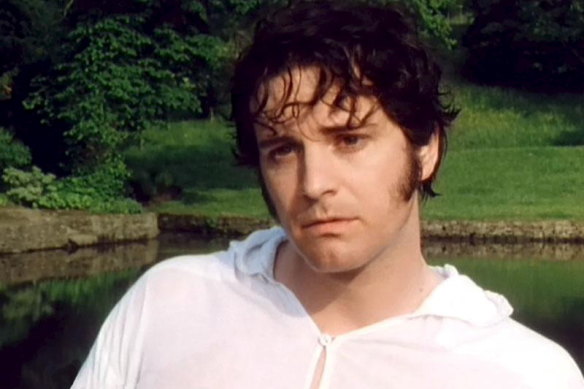
Actor, heart-throb, part-time neuroscientist.
In 2010, while guest-presenting a BBC radio show, the British actor asked scientists to scan the brains of two MPs, one Labour and one Tory, to see if they could detect any differences between the ideological opponents.
What started as a radio gimmick morphed into a real study with 90 participants at University College London.
The resulting paper – with Firth credited alongside three co-authors – reported conservatives had more grey matter in their amygdala, which processes fear. The findings seemed in line with previous studies that found conservative people react more strongly to threatening, negative or disgusting imagery. (One such study showed participants an image of a man eating a fistful of writhing worms. The more revulsion a participant showed, the more likely they were to oppose gay marriage.)
Left-wing liberals, meanwhile, had more brain volume in their anterior cingulate cortex (ACC), a region that monitors uncertainty. “It is conceivable that individuals with a larger ACC have a higher capacity to tolerate uncertainty and conflicts, allowing them to accept more liberal views,” the authors wrote.
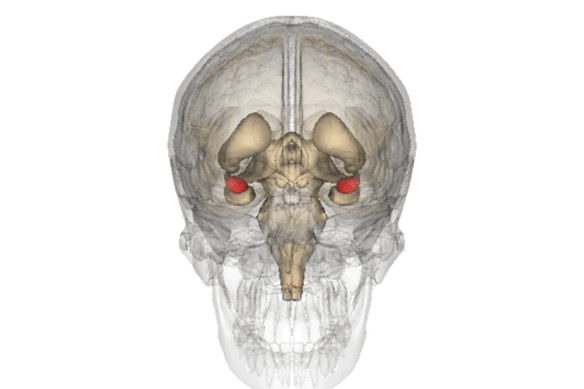
The “alarm centre” of the brain, the amygdala (highlighted in red) is larger in conservative people.Credit: Life Science Databases (LSDB)
Neuroscientists recently moved to double-check this widely publicised finding. They analysed the brain scans of 928 people – 10 times more than the original paper’s sample size.
They confirmed the amygdala was larger in conservative people’s brains. “Quite honestly, we did not expect to replicate any of these findings,” researcher Diamantis Petropoulos Petalas said upon the release of the results last month.
The difference in amygdala volume, however, was three times smaller than originally thought – amounting to the size of a sesame seed. And they found no difference in the size of ACCs in conservative and liberal people.
Should it give us hope that the neurological differences between political enemies are not as drastic as feared?
Or is the fact that political opposition runs so deep that researchers can pick at least some differences between left- and right-wing brains just further evidence that there are factions of society who will never see eye to eye?
For some much-needed advice on how ever-intensifying political rifts may be healed, I called the man who made one of the biggest scientific discoveries of all time.
Rule 1: Assume you are wrong
In the late 1980s, Saul Perlmutter went searching for the end of the universe.
The graduate physicist from the University of Berkeley came to Coonabarabran, NSW, so he could use the Anglo-Australian Telescope to track down a rare cosmic phenomenon called type 1A supernovae.
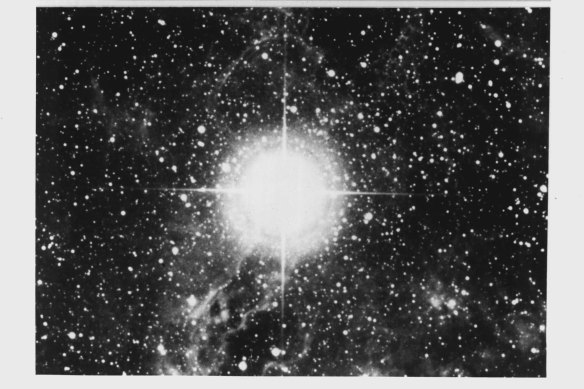
A type 1A supernova observed in 1987 by the AAT telescope, which Saul Perlmutter used early in his Nobel Prize-winning research.Credit: Anglo-Australian Observatory
These cataclysmic explosions burst with the same brightness each time, so their distance can be measured and used to calculate how quickly the universe is expanding. Perlmutter tracked down 42 of these supernovae over a decade.
Cosmologists believed the universe’s expansion was slowing as gravity drew cosmic objects together. Once the universe stops expanding, one theory holds, everything will crunch back together into a single point. Perlmutter wanted to measure how much the universe’s expansion had slowed, to see how close we were to the Big Crunch.
But his results showed the opposite – the universe’s expansion was accelerating, fuelled by a mysterious force dubbed “dark energy”.
Perlmutter and his colleagues assumed they had made a mistake, and spent almost a year poring over the results, recalibrating instruments, hunting for computer bugs and checking that cosmic dust hadn’t artificially dimmed the supernovae. They knew their data would be mercilessly dissected.
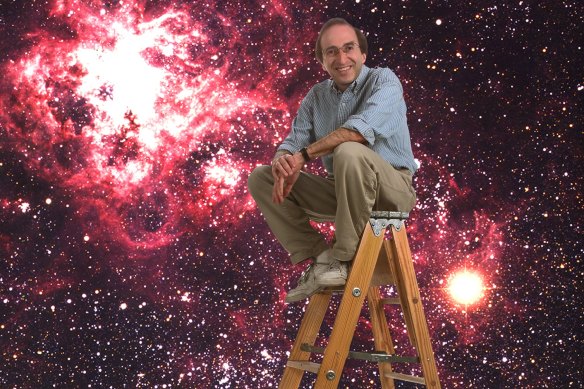
A composite image of Professor Saul Perlmutter and a supernova 1A from 1998.Credit: University of California, Berkeley
When they finally decided to take the results public at a university talk, a prominent theoretical cosmologist, Joel Primack, stood up. He turned to the audience. “You may not realise this,” he told the crowd. “But this is a big deal.”
“I had been mostly worried about all the attacks,” Perlmutter admits to me now. “I had forgotten that people might also be excited.”
The scientific scrutiny came swift and fierce, but his results held true. Perlmutter won the Nobel Prize in 2011 – alongside Australian astrophysicist Brian Schmidt, who had separately discovered the same thing.
The experience drove Perlmutter to consider the skills scientists cultivate that allow such discoveries to be made. While politicians and other elements of society fail to argue constructively, the pursuit of science flourishes on disagreement, self-scrutiny and the assumption that initial conclusions are wrong.
“We don’t like it when we have to be refereed by people who are going to give us a hard time. But we know that it’s important,” Perlmutter says. “And I think that’s something that the larger world could really use.”
Bias, uncertainty, and why different brains are useful
Shortly after his Nobel Prize win, Perlmutter and two colleagues hung up a sign at their Berkeley campus that read: “Are you embarrassed watching our society make decisions? Come help invent a course, come help save the world.”
About 30 students showed up to figure out what elements of scientific thinking could help society at large. That led to Sense & Sensibility & Science, now a popular course at Berkeley being replicated at other universities.
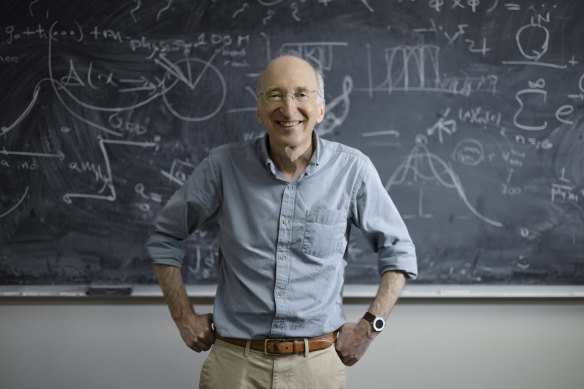
Professor Saul Perlmutter won the Nobel prize in 2011 and has turned his attention to teaching scientific concepts to the public.Credit: Christopher P. Michel
The course warns students against confirmation bias, for example, whereby you’re likely to stop looking for an answer once you find evidence that supports your preconceived conclusion. For the same reason Perlmutter spent months double-checking his supernovae results for errors, we should keep searching for information even when we find an answer that suits our cause.
“This is something that we can do in our day-to-day lives,” he says. “If you’re trying to decide what website to trust for a health issue, for example, you should not look for the website that gives you the answer that you want.
“First find a website that is trustworthy, without looking at the answer for your particular issue, and then let yourself see what your answer is. That’s called ‘blind analysis’, and we use it in physics.”
Another game taught in the course involves two people with a differing view asking each other questions.
The aim of the game is to figure out the smallest possible set of facts and values that the other person believes which – if you believed those facts and adopted those values – would lead you to switch sides. Finding that kernel of disagreement gets opponents working constructively together and makes it more likely they could bridge their ideological gap.
“We’re often very surprised to discover that what we thought was driving somebody we strongly disagreed with was not at all what was driving them. They actually agree with us on many of the facts, many of our values,” Perlmutter says.
“That opens up the possibility of people who disagree saying ‘OK, let’s try to get to the bottom of it together’.”
The core of the course, he says, is teaching people to reject the allure of black-and-white truths, embrace uncertainty, and assume that initial conclusions are flawed.
And perhaps, even if the brains of political adversaries are intractably different, that’s a good thing.
Says Perlmutter: “Throughout history, the most dramatic scientific advances have been made by people who disagree with each other, working together to sharpen each other’s thinking.”
Professor Saul Perlmutter will be speaking in Sydney for the free Nobel Prize Dialogue at the University of NSW on October 24.
Enjoyed Examine, our free weekly newsletter covering science with a sceptical, evidence-based eye? Sign up to get the whole newsletter in your inbox.